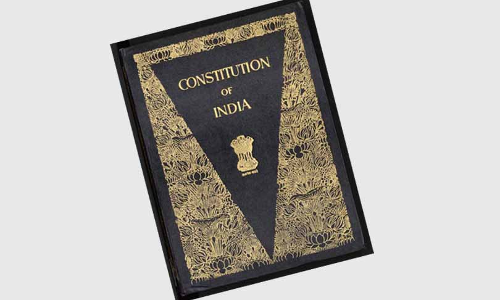
Today internet has become an integral part of our daily lives, and the concept of safe harbour provisions has emerged as a critical legal framework. These provisions aim to strike a delicate balance between fostering innovation and holding online platforms accountable for the content they host. Different jurisdictions around the world have adopted varying approaches to safe...
Today internet has become an integral part of our daily lives, and the concept of safe harbour provisions has emerged as a critical legal framework. These provisions aim to strike a delicate balance between fostering innovation and holding online platforms accountable for the content they host. Different jurisdictions around the world have adopted varying approaches to safe harbour provisions, reflecting their unique legal, cultural, and economic contexts.
Safe harbour provisions are essentially legal immunities granted to online intermediaries, such as internet service providers, social media platforms, and e-commerce websites, shielding them from liability for user-generated content. The intention behind these provisions is to encourage the growth of online services and platforms without burdening them with the legal responsibility of monitoring and moderating every piece of content that passes through their servers.
One of the most well-known instances of safe harbour provisions can be found in the United States, under Section 230 of the Communications Decency Act of 1996. Section 230 protects online platforms from being treated as publishers of user-generated content, offering them a significant shield against legal claims arising from content posted by users. This provision has been crucial in the development of the American internet industry, allowing companies like Facebook, Twitter, and YouTube to flourish.
In the European Union, the e-Commerce Directive provides a similar framework, offering safe harbour protections for online intermediaries. However, the EU’s approach differs from that of the United States in that it emphasises shared responsibility. Under the EU Directive, platforms must act expeditiously to remove or disable access to illegal content once they become aware of it, aligning more closely with the EU’s commitment to strong consumer and data protection rights.
India, too, has introduced safe harbour provisions through Section 79 of the IT Act 2000. It states that an intermediary cannot be held responsible for any information, data, or communication link provided or hosted by them on behalf of third parties. These provisions aim to balance the interests of online platforms and users while maintaining a commitment to remove illegal content upon notice. However, in its proposed Digital India Act, the provision is being reimagined.
The approach to safe harbour provisions is not uniform across all jurisdictions. In contrast to the United States and the EU, countries like China and Russia have taken a more stringent stance. These nations have implemented laws that place greater responsibility on online platforms for monitoring and censoring content, often requiring them to store user data within the country’s borders.
The diversity in approaches to safe harbour provisions raises important questions about the global governance of the Internet. While these provisions are intended to foster innovation and free expression, they also have the potential to create a fragmented digital landscape. Platforms that operate globally must navigate a patchwork of regulations, leading to concerns about censorship, compliance costs, and a potential chilling effect on innovation.
Eliminating or significantly altering safe harbour provisions would entail a substantial shift in the internet’s dynamics. Online platforms, spanning social media networks to user-generated content websites and e-commerce platforms, would suddenly face heightened legal accountability for user-generated content. This would likely lead to a surge in legal disputes, encompassing issues such as content moderation, defamation, and copyright infringement. In response, platforms might adopt stricter content moderation policies and automated filtering systems to mitigate their legal risks. The downside could be a higher likelihood of content censorship or removal, potentially affecting freedom of expression and user engagement. Furthermore, the increased legal risks and compliance costs could pose substantial challenges for startups and smaller tech companies, potentially dampening innovation and competition in the tech sector. The consequences would extend to user-generated content, with platforms becoming more circumspect about allowing such content due to the heightened legal liability. Concerns about legal repercussions might also have a chilling effect on online speech, constraining open discourse and free expression. Ultimately, the elimination of safe harbour provisions could ripple globally, as platforms might implement more restrictive content policies worldwide to mitigate legal risks, leading to a more uniform online environment. Additionally, it could precipitate complex legal battles, inundating the judicial system with cases related to internet content and liability. In response to these changes, online platforms may need to rethink their business models, potentially moving away from user-generated content or embracing subscription-based models to offset rising legal costs. Finding the right equilibrium between nurturing a safe online space and safeguarding free speech and innovation is a multifaceted challenge that policymakers worldwide continue to grapple with.
The debates around safe harbour provisions are far from settled. As the digital world continues to evolve, legal frameworks will need to adapt to new challenges, including the spread of misinformation, hate speech, and the implications of emerging technologies like artificial intelligence.
Safe harbour provisions play a crucial role in shaping the digital ecosystem, influencing the balance between online innovation and accountability. While different jurisdictions have adopted varying approaches, it is evident that the need for a harmonised global framework is pressing. As the internet transcends borders, finding common ground on these provisions becomes essential to ensuring a secure, innovative, and interconnected digital future. Achieving this balance will require careful consideration of the diverse interests at play and ongoing international cooperation in shaping the rules of the digital road.
Sanhita works in the Applied Law and Technology Research Vertical of Vidhi Centre for Legal Policy. Views are personal.




